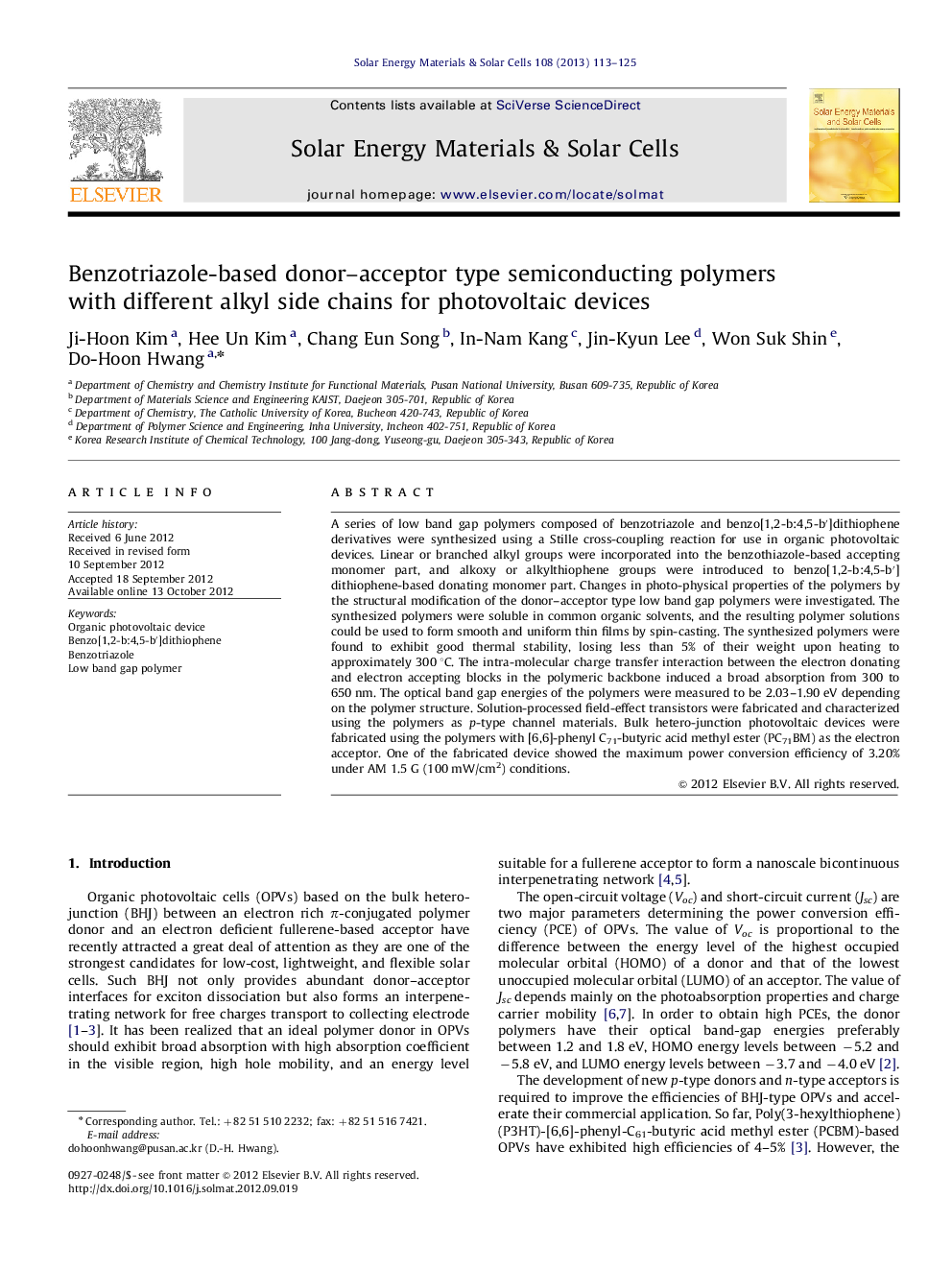| کد مقاله | کد نشریه | سال انتشار | مقاله انگلیسی | نسخه تمام متن |
|---|---|---|---|---|
| 78686 | 49340 | 2013 | 13 صفحه PDF | دانلود رایگان |

A series of low band gap polymers composed of benzotriazole and benzo[1,2-b:4,5-b′]dithiophene derivatives were synthesized using a Stille cross-coupling reaction for use in organic photovoltaic devices. Linear or branched alkyl groups were incorporated into the benzothiazole-based accepting monomer part, and alkoxy or alkylthiophene groups were introduced to benzo[1,2-b:4,5-b′]dithiophene-based donating monomer part. Changes in photo-physical properties of the polymers by the structural modification of the donor–acceptor type low band gap polymers were investigated. The synthesized polymers were soluble in common organic solvents, and the resulting polymer solutions could be used to form smooth and uniform thin films by spin-casting. The synthesized polymers were found to exhibit good thermal stability, losing less than 5% of their weight upon heating to approximately 300 °C. The intra-molecular charge transfer interaction between the electron donating and electron accepting blocks in the polymeric backbone induced a broad absorption from 300 to 650 nm. The optical band gap energies of the polymers were measured to be 2.03–1.90 eV depending on the polymer structure. Solution-processed field-effect transistors were fabricated and characterized using the polymers as p-type channel materials. Bulk hetero-junction photovoltaic devices were fabricated using the polymers with [6,6]-phenyl C71-butyric acid methyl ester (PC71BM) as the electron acceptor. One of the fabricated device showed the maximum power conversion efficiency of 3.20% under AM 1.5 G (100 mW/cm2) conditions.
Figure optionsDownload as PowerPoint slideHighlights
► A series of low band gap polymers containing benzotriazole units was synthesized.
► The optical and electrochemical properties of the synthesized polymers were characterized.
► Changes in photo-physical properties of the polymers by the structural modification were investigated.
► One of the fabricated devices showed a power conversion efficiency of 3.20%.
Journal: Solar Energy Materials and Solar Cells - Volume 108, January 2013, Pages 113–125